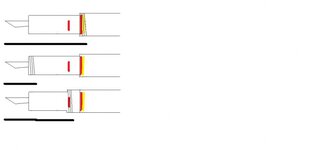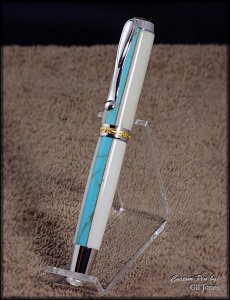Now if you are designing a pen and you are putting threads on the section, what does that do to the threading on the cap? For the most part it allows the cap threading to be higher up in the cap.
I can do this with the threads on the body as well. I dont see how the threads on the section are going to allow that any differently. Moving them forward 1/4" isnt going to change much. I can get the threads just as high in the cap and keep the cap the same length as one with the threads on the section, with the threads on the barrel. This is more an esthetic thing (putting threads on the section) than a functional one. Can anyone give a truly functional purpose for this other than esthetics?
If you put the cap threads on the body and the section threads on the inside, you get to a point where the material can get pretty thin and fragile. I'd hazard to guess that sometimes its fragile enough that one could break the pen screwing the section in too tightly.
Moving the cap threads to the section can relieve this somewhat. You can design a section that has no overlapping thread portions.
|cap threads|nib holder threads|section threads|
thus not stressing the material as much. I think it also makes making the pen easier since the tolerances aren't as important.
I made one pen with no section just to see if I could. I could tweak the design a bit and have the cap threads on the body (currently there are no cap threads) with no chance of breakage. But I'm working on other things right now.


